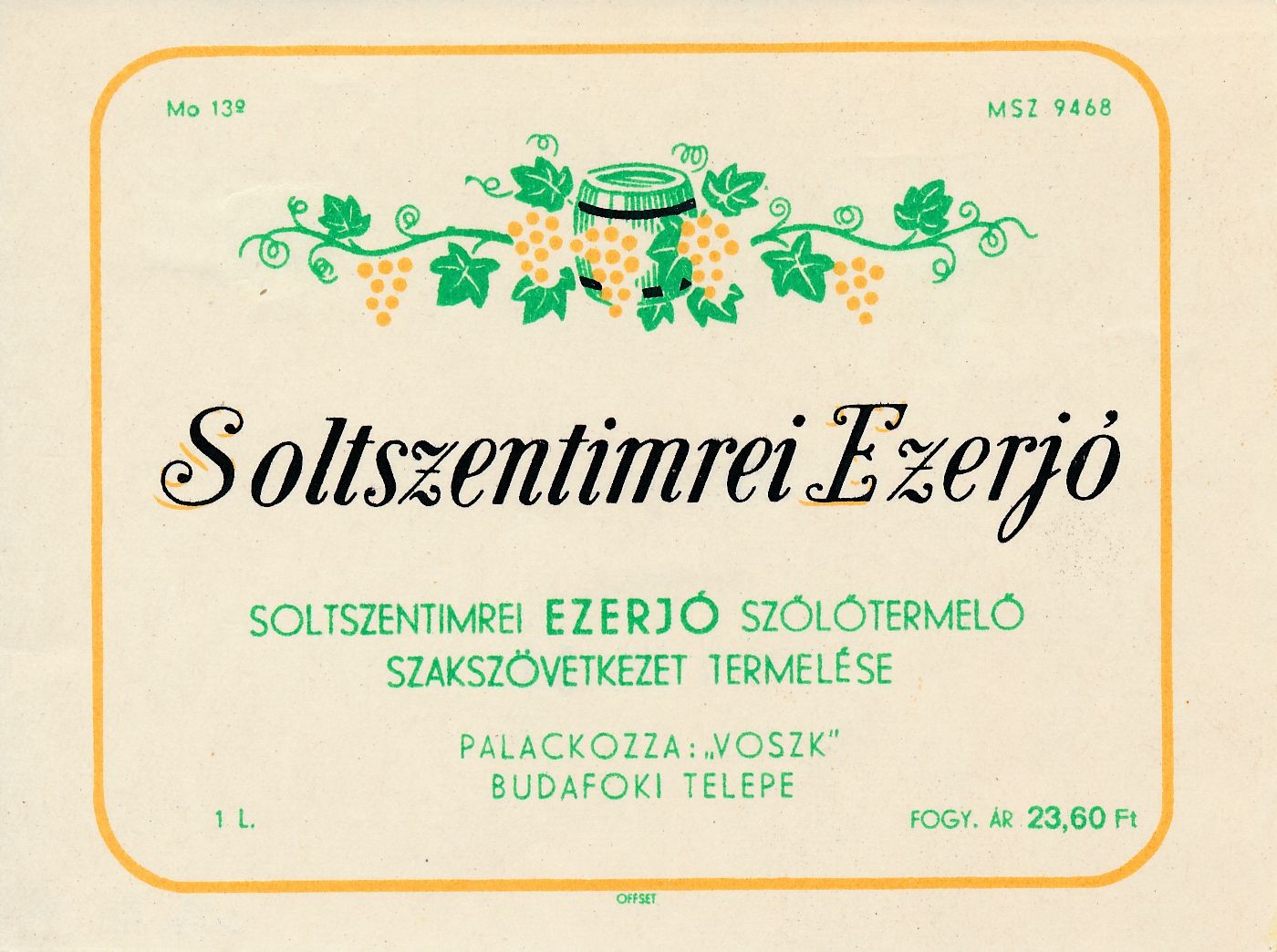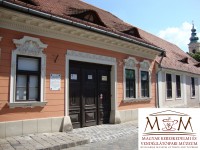NarancsszÃnÅą, lekerekÃtett sarkÚ keretben fekete ÃĐs zÃķld betÅąs szÃķveg. Soltszentimrei EzerjÃģ.
Soltszentimrei EzerjÃģ SzÅlÅtermelÅ SzakszÃķvetkezet termelÃĐse. Palackozza "VOSZK" budafoki telepe. 1l Fogy ÃĄr: 23,60 Ft.
A szÃķveg fÃķlÃķtt zÃķld-narancs szÃnÅą ÃĄbra: hordÃģ ÃĐs stilizÃĄlt szÅlÅinda szÅlÅfÞrtÃķkkel.
A cÃmke hÃĄtoldalÃĄn a palackozÃĄs dÃĄtumbÃĐlyegzÅje: 1970 jÚl. 31.
VOSZK: VendÃĐglÃĄtÃģipari OrszÃĄgos SzolgÃĄltatÃģ KÃķzpont (1958-1972), ÃĄtalakulÃĄs utÃĄn (1972-1992) mÅąkÃķdÅ bortermelÅ, palackozÃģ ÃĐs forgalmazÃģ vÃĄllalat.
A SzakszÃķvetkezet 1961-tÅl mÅąkÃķdik.
Az ezerjÃģ jellegzetes rÃĐgi magyar szÅlÅfajta, fehÃĐr bakator ÃĐs budai fehÃĐr nÃĐven is ismerik. Nagy savtartalmÚ, "kemÃĐny" bort ad. A mÃģri borvidÃĐk jellemzÅ fajtÃĄja, de az AlfÃķldÃķn is termesztik. TÃķbb Újabb fajta nemesÃtÃĐsÃĐhez felhasznÃĄltÃĄk az 1970-es ÃĐs 80-as ÃĐvekben (pl. zenit, zengÅ, zeus, jubileum 75).
hu









